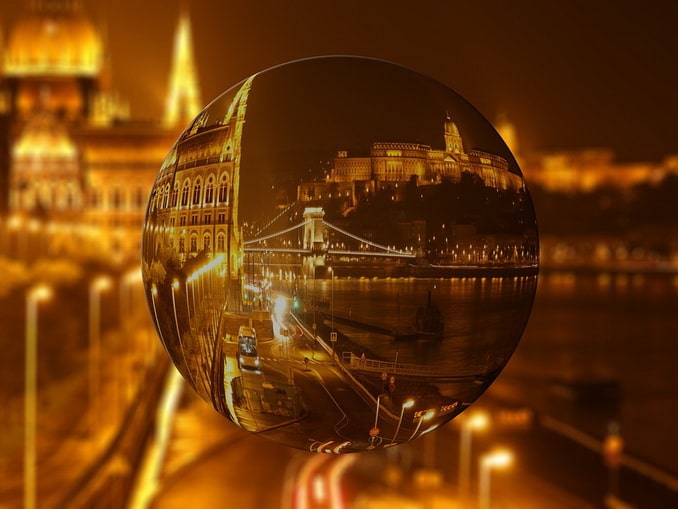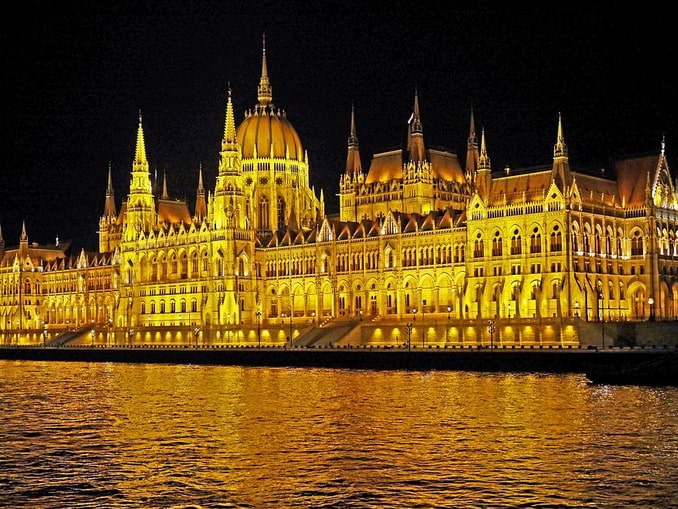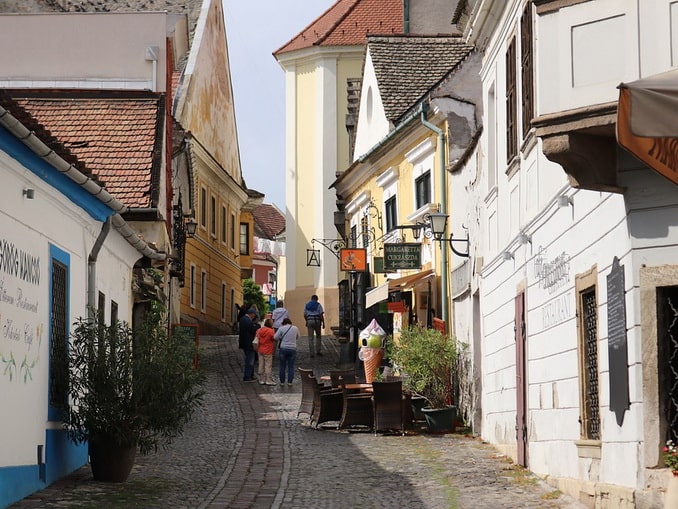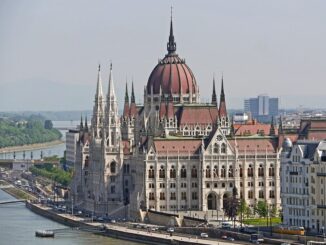
What to see and do in Budapest in 1, 2, 3 days? Must visit places and main attractions, convenient itinerary for walking, hotels & tour prices 2024. Where is better to stay, what to visit near Budapest – found out good Time for Trip.
Budapest is the largest city of Hungary, its capital. The center of gravity and souls of that not so big European country – in every sense!
Is it any wonder that almost every tourist upon arriving in Hungary is first visiting Budapest? And only after that – if he have enough time – goes further: swims and sunbathes on Lake Balaton, gets healthier on Lake Heviz, explores Gyor or Eger, to delves into the almost virgin wilds of the Bükk National Park.
It’s worth remembering that in a short time (up to 2-3 days) you will hardly able to do even the main things in Budapest. So having a detailed and well-structured plan of possible sightseeing activities will be a significant bonus
This story is telling you how to explore all the places of interest – not forgetting, of course, about Budapest’s thermal baths – in just a couple of days. But at first let me say you about the best time for doing so…
When Is Better to Go
If you wish to see not overcrowded Budapest, it’s wiser visiting it in the off-season time. Although it becomes more and more difficult to do in every new year!
Indeed, considering a visit to Budapest in May, you will find it’s busy that time, and there are enough idle people on the streets. To what, of course, contributes warm weather, teeming with a lot of sunny days.
Equally, pretty warm is in Budapest in September and October: the average temperature is in the range of +18-24 °C. And the nature is pouring very moderate portions of rain on tourists hats and umbrellas.
November and December in the capital of Hungary are somewhat more gloomy months – in winter, in addition, frosts occur here. Fog is also frequent, enveloping the city with an impenetrable and disturbing veil
But shortly before Christmas and a bit later, right after the New Year, Budapest looks magical. Even in late November begins working Christmas fairs and the whole city is decorated with a mass of shining garlands and other festive attributes. Everywhere is a lot of tourists, although not so much that it would be worth giving up the trip.
January and February are cold and mostly overcast here. The air temperature ranges from -2 to +10 °C, but still gravitates towards positive values.
Very good here is March: if not particularly warm, then a very bright month. And April in Budapest is literally magnificent, it’s time of blossoming gardens and parks.
What to Do in Budapest First – Day 1
Local castle, which guidebooks personify with the royal palace, is the central attraction of the city. At least, on the right bank of the Danube.
Looking very impressive and advantageous located on a hill above the river, the fortress is attracting everyone’s attention. A pity, but there are practically no historical interiors inside, and therefore the main goal of tourists here are museums.
In the halls of the former royal palace of Hungarian kings today lodge the National Gallery and the Museum of History
An equestrian statue of Prince Eugene of Savoy proudly stands in front of the residence. No wander – he was the hero of many skirmishes with the Turks and in general, one of the best generals of all time.
It is unlikely that you will not see the Matthias fountain within the Buda castle. As it is built right into the wall of the building.
Buda
Don’t miss the chance to walk along the pretty narrow streets on the Fortress Hill – local houses have been preserved in an original shape much better than the castle itself. Which received massive damage during the Second World War.
Roaming, you can easily get to the snow-white Fisherman’s Bastion. Perhaps the best observation deck in Budapest providing fabulous views on the Danube and the incredibly airy, albeit huge, Hungarian Parliament.
Adjacent to the Fisherman’s Bastion is the completely French-looking church of St. Matthias. Dating back to the 13th century, but totally rebuilt in the 19th.
Don’t be surprised at its purest, literally alphabetic Gothic facades and interiors!
Despite the fact the architects tried to preserve the appearance of the temple of the XIII century, destroyed by the Turks in the XVI, they didn’t succeed. The splendor of the decoration and the thoroughness of drawing the details clearly indicate that there are not real Middle Ages.
It was in the church of St. Matthias that Franz Joseph and his wife, Empress Sisi, were crowned in the Hungarian kingdom at one time.
Parliament
The rich neo-Gothic building, rising on the other side of the Danube, is one of the most prominent sights you must see in Budapest. Probably, even the most important of them, the true symbol of the city!
Naturally, it’s often considered a former royal residence, although the building is intended for the sessions of the Hungarian Parliament. While designing it, the architect Imre Steindl choose the Palace of Westminster in London as a role model.
The mass of the complex, which exceeds the British colleague by a meter in length and width, was so great that the bank of the Danube had to be specially strengthened. And its scale to the present amaze almost anyone.
You can get inside when there are no parliamentary sessions, tickets for a certain date are sold online
You can walk to the Hungarian Parliament from the Buda Castle in about 20 minutes. On the way, having examined the Chain Bridge – another recognizable symbol of Budapest.
And, by the way, the first permanent crossing of the Danube since the time of the Roman Empire. Its construction ended in 1849!

On the left bank of the river, right on the embankment, you can see cast-iron shoes. This is a memorial to the victims of the Holocaust.
In 1944-1945, it was from here that the Nazis took thousands of Jews to execution: men and women, old people and kids…
Where to Stay
Probably, the best inexpensive area you should examine looking for an accommodation, is hilly Buda part of the city. Located on the other side of the Danube Pest is a bit (sometimes a lot) more ruinous place for staying.
Advice you to pay special attention to the rarely empty Váralja Home, which is located in 10 minutes from the Buda Castle but keeping reasonable prices (around 90 € per night in September)! Another good (and cheap) choice here is Castle View – NEW – Romantic, the apartment in 400-500 meters from the Matthias church.
Pest
The morning of the second day in Budapest, I would recommend to start with relaxing activities. For example, from visiting the famous thermal baths Széchenyi, the largest in Europe.
The easiest way to get there is Budapest metro – you need to get off at the station of the same name (Széchenyi fürdő)
After bathing, you can see the Varosliget park and eclectic Vajdahunyad castle. As well as to take a look at the Heroes’ Square with the mighty Millennium Column and get inside the Hungarian Museum of Fine Arts – the country’s main art gallery.
St. Stephen’s Basilica
Without fail, you must see this church outside, and even better, inside. By the way, probably, go up to the observation deck – there are wonderful views of Budapest.

Adjacent to the church Pest’s quarters are built up with beautiful, approximately one-style buildings. And a walk along these streets will inevitably cause you to feel deeply satisfied.
If you don’t mind shopping, look inside the main shopping street of Budapest, Vaci. After all, in the local stores you will find a lot of things that would be worth bringing home from Hungary.
Another great place for shopping in Pest – the Central Market Hall.
Gellert Hill
In the afternoon, consolidate joyful impressions with climbing the 235-meter rock above the Danube (metro station Szent Gellért tér). From the deck on its top open up great views of Budapest.
Down in the hill, in the first half of the 20th century, the Cave Church was cut down. During the years of Soviet power it did not work, but today has been restored. Services are held, tourists can also get inside.
At the foot of the Gellert Hill, there are less fashionable than Széchenyi, but also privileged Gellert Thermal Bath. Which someone is calling in a way pretentious manner – Gellert Spa.
On the embankment nearby there is another similar complex – Rudas Thermal Bath which have its own unique mark – rooftop (mini) pool. From where you can glance the central part of Budapest.
If possible, visit the Budapest “Invisible Exhibition”: this museum is dedicated to the world of blind people, excursions there are carried out in complete darkness. So that visitors can understand how difficult is live without seeing anything.
In The Neighborhoods
of Budapest there’s a lot of places to see!
For instance, I can mention the tower of Erzhebet (named after Sisi, Austro-Hungarian empress), on Mount Janos (526 meters) just west of the city. From where on a clear day you will see not only the capital of Hungary, but even the peaks of the Tatras.
You can climb the hill on foot. But it is more interesting to do this with the Zugliget Chairlift cable car. Not new-fangled one with booths, but old-fashioned: with double open chairs. The impressions from such a trip will be simply incredible.
On the southern outskirts of Budapest, preserved the pretty Baroque Nagytétény Palace. Once the whole aristocratic family lived there, today the building functions as the Museum of European Furniture. Inside, there are plenty of exhibits dating back to the 15th-19th centuries!
Szentendre and Visegrad
The photogenic town Szentendre is located 20 km north of the Hungarian capital, its center is full of houses and churches of the XVIII century. There are many art galleries in Szentendre also, where you will surely pick up an authentic Hungarian souvenir for yourself or your friends.
There are also fine museums in Szentendre, pretty famous are the following: of Marzipan and Christmas.

On the outskirts is Szentendre Skanzen Village, the Hungarian equivalent of the Swedish open-air museum. Its exposition consists of original buildings collected from all over Hungary.
You can get to Szentendre by regular train from the stations combined with the Budapest Metro: Batthyány tér and Margit Híd
If you go another 20 kilometers in a northwesterly direction, you will find yourself in the tiny town Visegrad, nestled right in the bend of the Danube. But once it was the capital of the whole Hungarian kingdom!
The ruins of the local fortress and the Renaissance palace of Mateusz Korvin attract travelers like a magnet. Just beautiful and the view from the fortress hill on the Danube.
Eger and…
An interesting choice is a trip from Budapest to Eger. After all, visiting the legendary fortress there, and tasting the BikavHr, or “Bull’s Blood” wine, is considered as absolutely mandatory things for foreigners coming to Hungary.
Along the way, you can dip in the local healing baths in Eger. Well, or go to another famous thermals nearby, in Miskolc-Tapolca.
Definitely worth going a day journey from Budapest to Vienna. As the distance (240 km) between the Hungarian and Austrian capitals literally provokes to make such a step.
© Goodtimefortrip.com



